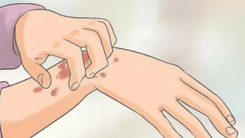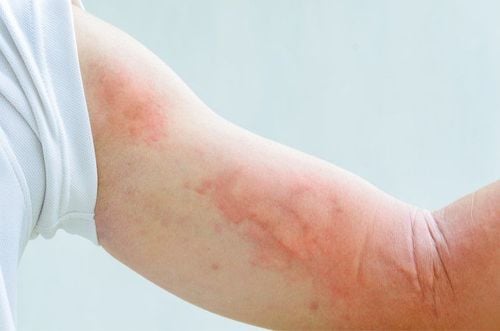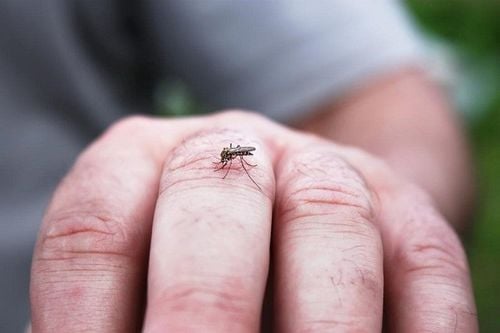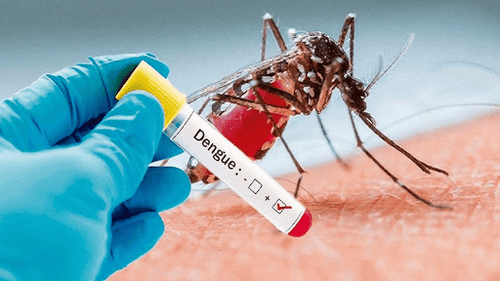Dengue fever is a common disease during the rainy season, which provides ideal conditions for mosquito reproduction and development. On the other hand, Dengue fever can occur all year in Vietnam due to its tropical monsoon climate. The disease can be life-threatening although it is easy to mistake it for a normal cold if the symptoms of dengue fever with rash do not show on the skin. So, why are certain cases of dengue fever without a rash?
1. Notice the signs and symptoms of Dengue fever
Dengue fever is caused by the Dengue virus. The Dengue virus is transferred from person to person by female mosquitoes of the Aedes genus.
In most disease-endemic locations, the Aedes aegypti mosquito serves as the principal vector. Mosquitoes are normally active during the day, and only female mosquitoes bite and spread the disease-causing virus.
The most common symptoms of dengue fever include sudden high fever, muscle aches, joint discomfort, a red rash, and lethargy for many days. It can potentially cause shock, low blood pressure, circulatory collapse, and internal bleeding.
In most cases of dengue fever, the primary warning sign is a rash on the skin; however, there are still cases of dengue fever without a rash, which makes many people mistake it for the flu caused by a common virus, causing subjectivity and negligence.
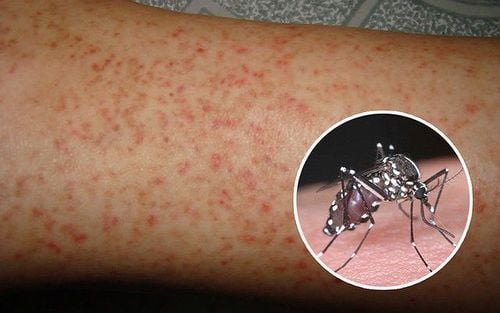
2. Grades of Dengue fever
Dengue fever occurs very complicatedly, especially when paying attention to shock complications because it can lead to death. The disease is divided into four levels for the convenience of monitoring and evaluating the patient's prognosis.
- Grade 1: The patient has dengue fever but only has a fever, no rash.
- Grade 2: The patient has a fever accompanied by bleeding symptoms (hemorrhagic spots under the skin, nosebleeds, bleeding gums, coughing up blood, vomiting blood, blood in the urine, prolonged menstruation).
- Grade 3: The patient has signs of shock.
- Grade 4: The patient is in severe shock.

3. Dengue fever without rash should not be subjective
Dengue fever with rash is not a mandatory symptom. A patient can be diagnosed with dengue fever without rash symptoms.
"Dengue fever, whether with or without rash, can progress to shock, the most severe complication of the disease. The critical phase of dengue fever typically occurs between the fourth and seventh days. However, this danger is not caused by the rash but rather by thrombocytopenia and hemoconcentration, which lead to coagulation disorders and increase the risk of bleeding in multiple sites. Coagulation disorders mark a particularly critical period, so it is essential to transport the patient to the nearest medical facility promptly to receive appropriate care and prevent life-threatening complications."
Most cases of dengue fever death are due to severe shock, which is a syndrome with symptoms of hypothermia (body temperature drops below normal - if the body temperature drops at the same time with the effect of antipyretic drugs, it is hazardous), decreased perception, poor mental alertness, lethargy, drowsiness, delirium, hypotension.

4. Management of Patients with Dengue Fever Without Rash
Management of patients with dengue fever without rash is as follows:
- Grade 1 Dengue Fever (Dengue Fever Without Rash): Once diagnosed, patients can be managed as outpatients at home under the doctor’s prescription. The patient and family members must adhere to the doctor’s follow-up appointment schedule.
- Progression to Grade 2 Dengue Fever: Patients can still be managed at home under close monitoring or hospitalized if necessary. Regular temperature monitoring is crucial; measure the temperature using the axillary (armpit), rectal, or oral route every few hours.
In addition: The patient must rest completely, avoid strenuous activities, and avoid wearing excessively thick or tight clothing.
- If the body temperature exceeds 38.5°C, administer a single dose of paracetamol as an antipyretic. Repeat dosing every 6 hours if the fever persists, and recheck the temperature 1 hour after taking the medication.
- If the body temperature is between 37°C and 38.5°C, fever-reducing medications may be given, and the patient can be wiped down with a towel soaked in warm water (2–3°C below body temperature).
Important Note: Avoid using Aspirin or Ibuprofen for fever reduction, as these medications disrupt blood clotting, leading to prolonged bleeding, which is especially dangerous in children.
When the fever remains high (above 39°C) for an extended period, the patient must drink plenty of fluids to replace water loss due to fever. Optimal fluids include: ORS solution (oral rehydration salts); Roasted rice water; Salt-sugar solution (two teaspoons of salt and eight teaspoons of sugar dissolved in one liter of cooled boiled water); Orange juice or fresh lemon juice to supplement Vitamin C.
Nutritional Support: If the patient presents with symptoms such as vomiting, paleness, or fatigue leading to reduced food intake, there is an increased risk of hypoglycemia. It is essential to ensure adequate nutritional intake with easily digestible foods divided into small, frequent meals. Avoid high-fat foods. Nutritional supplementation with milk may also be beneficial.
Caution: Dengue fever without rash may be underestimated or confused with common colds or fevers. To ensure early diagnosis and safety, patients presenting with suspected symptoms of dengue fever must visit a medical center for examination and diagnostic testing. Whether dengue fever presents with or without rash, it can progress to shock, a life-threatening complication. Prompt medical intervention is critical.
To arrange an appointment, please call HOTLINE or make your reservation directly HERE. You may also download the MyVinmec app to schedule appointments faster and manage your reservations more conveniently.


